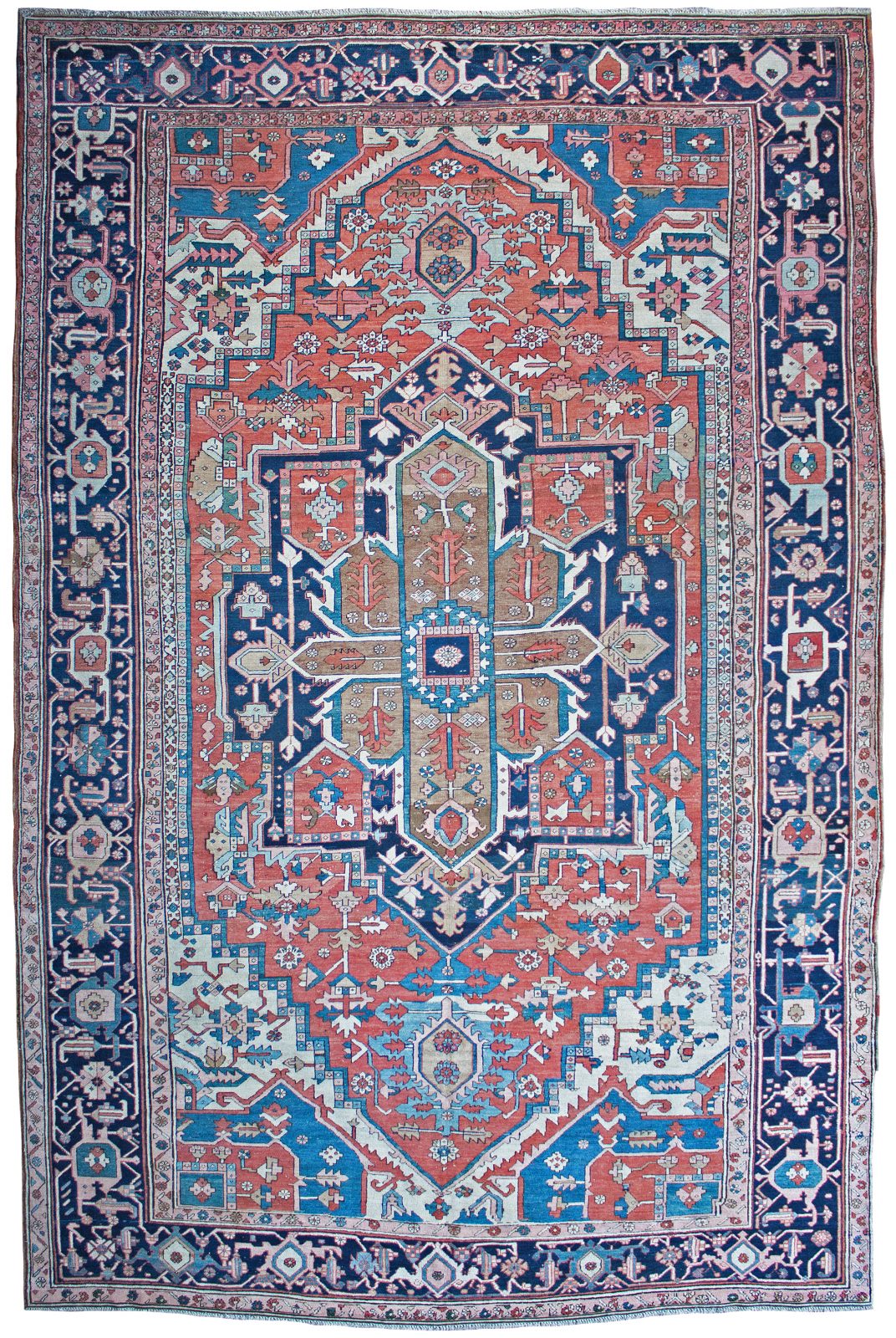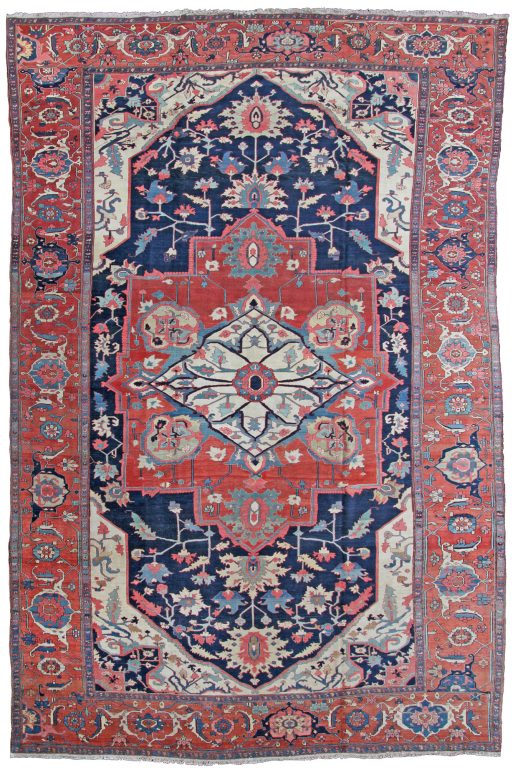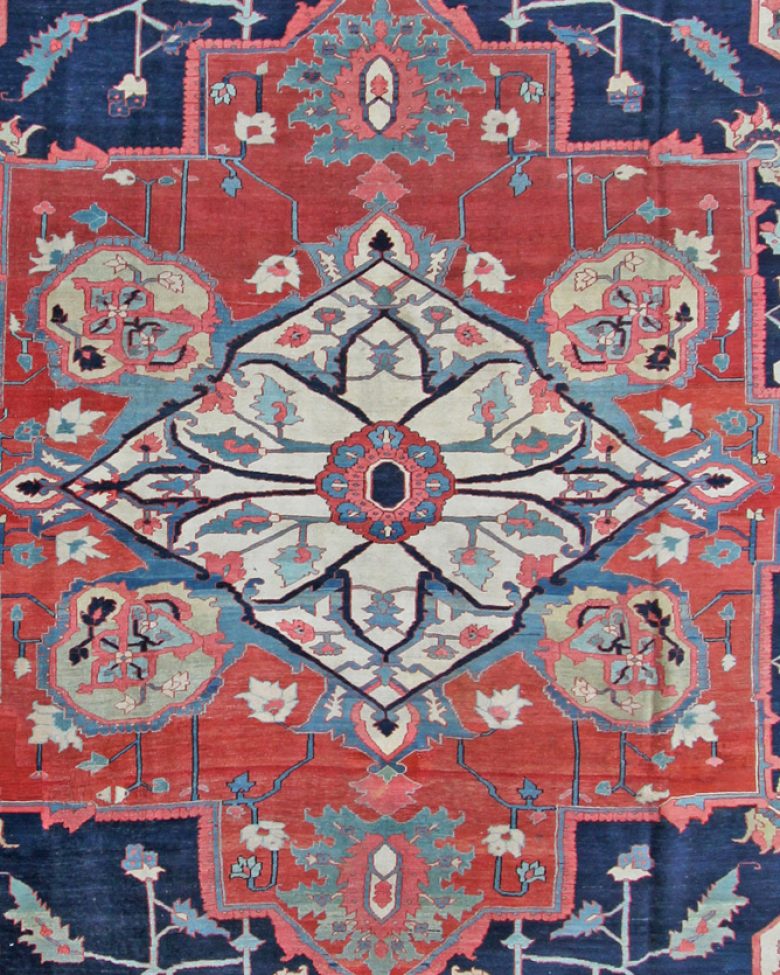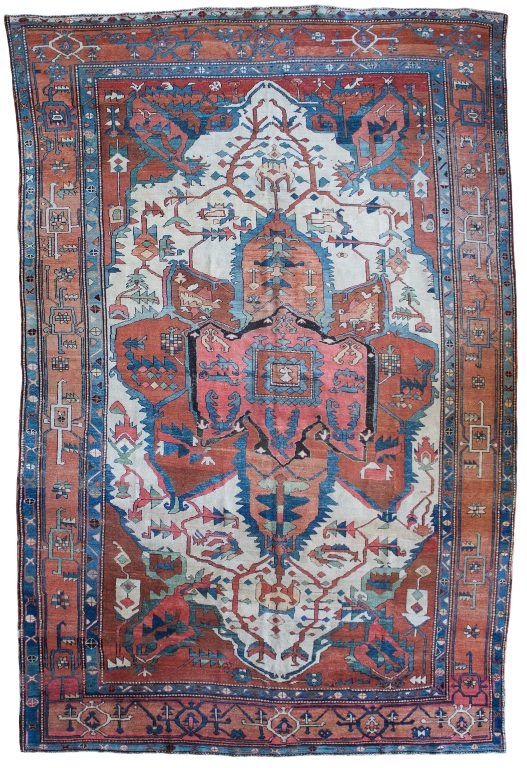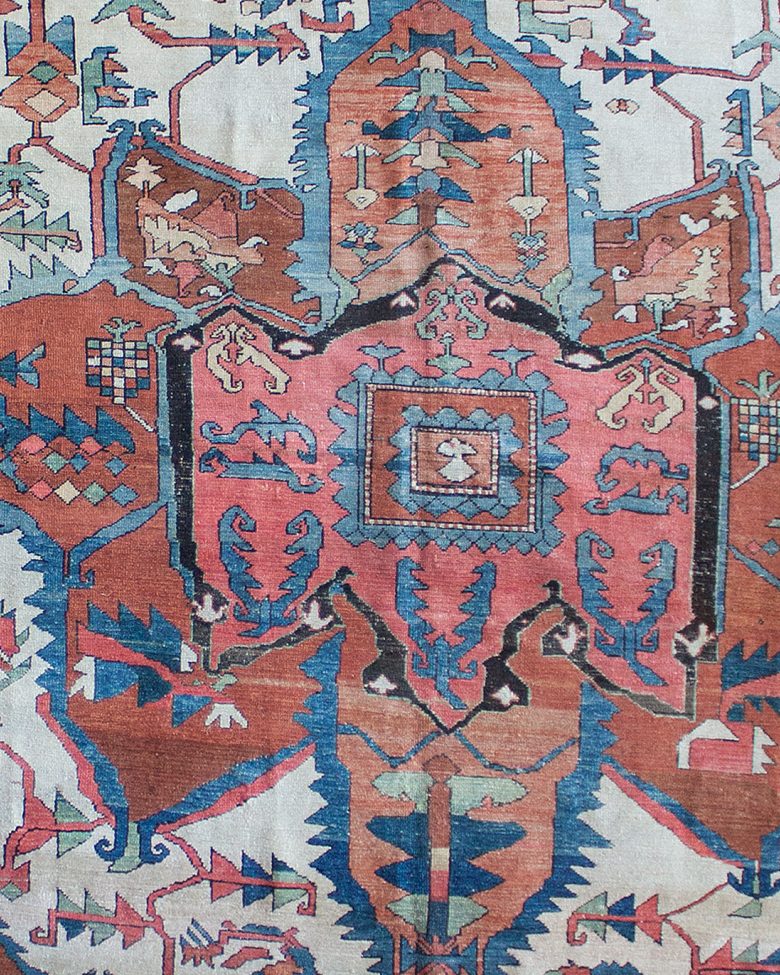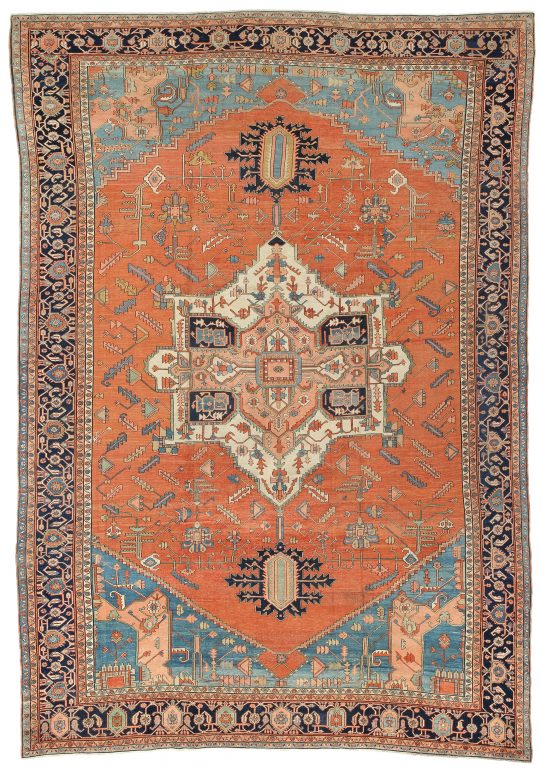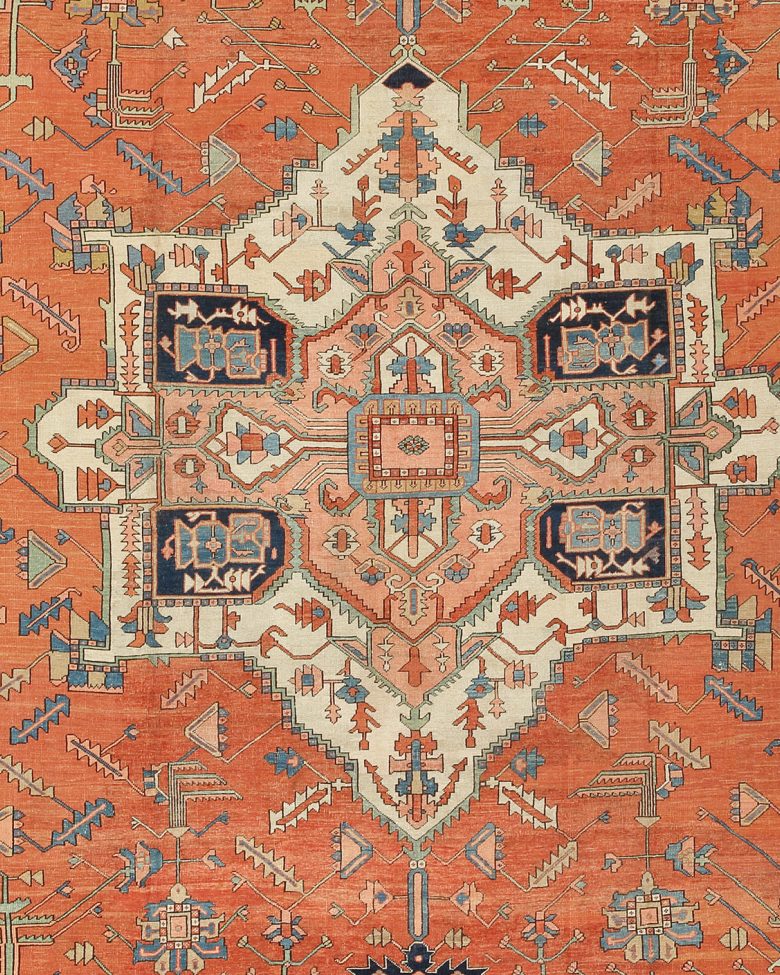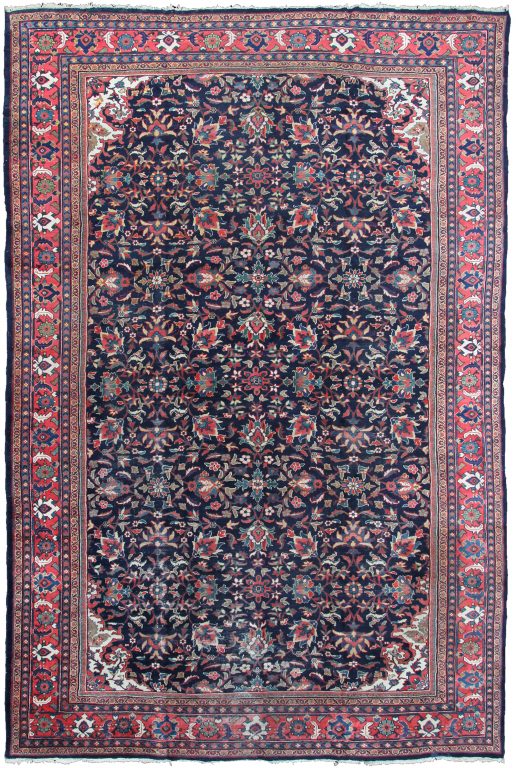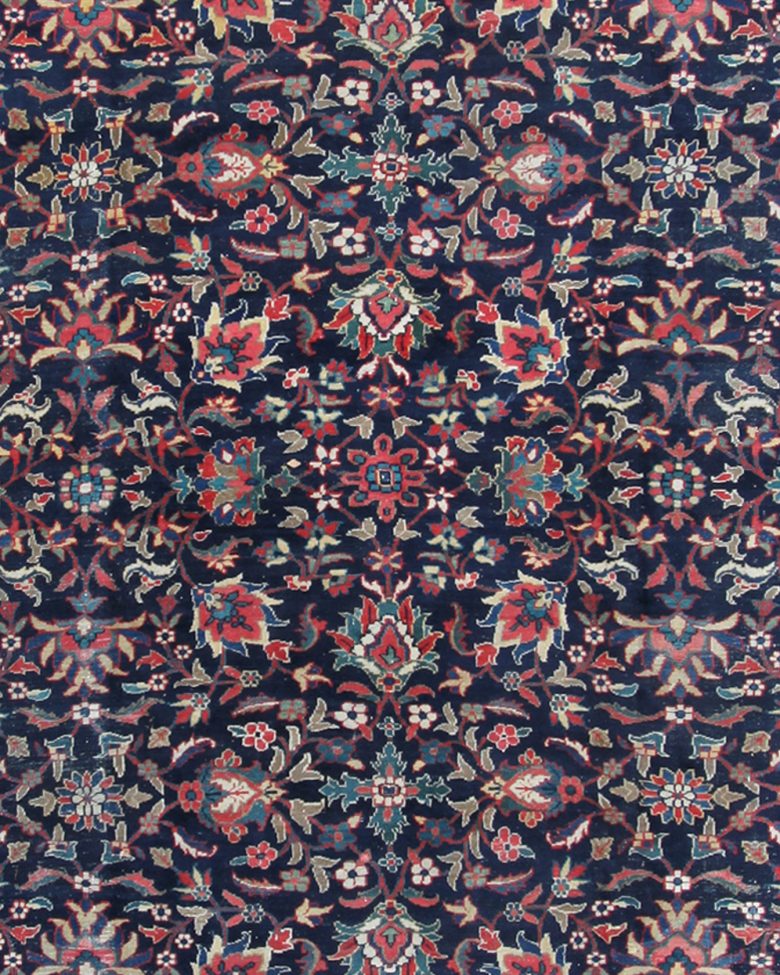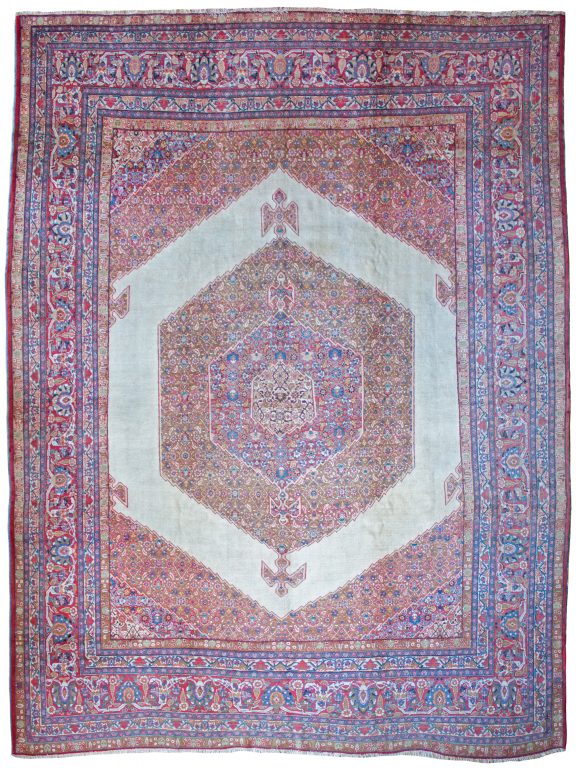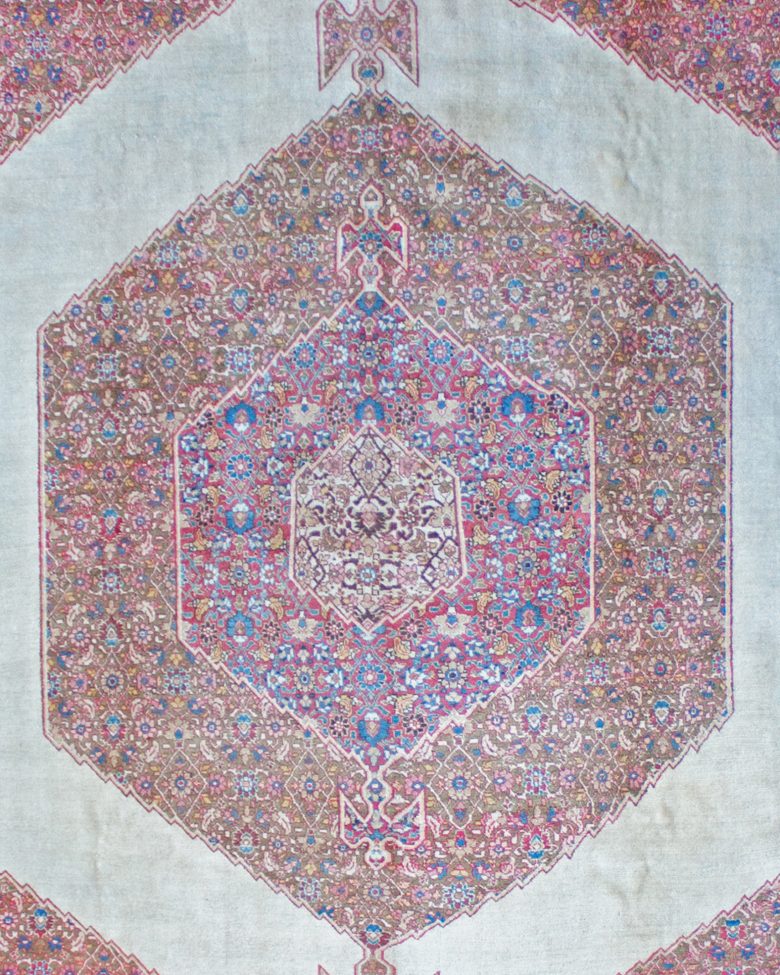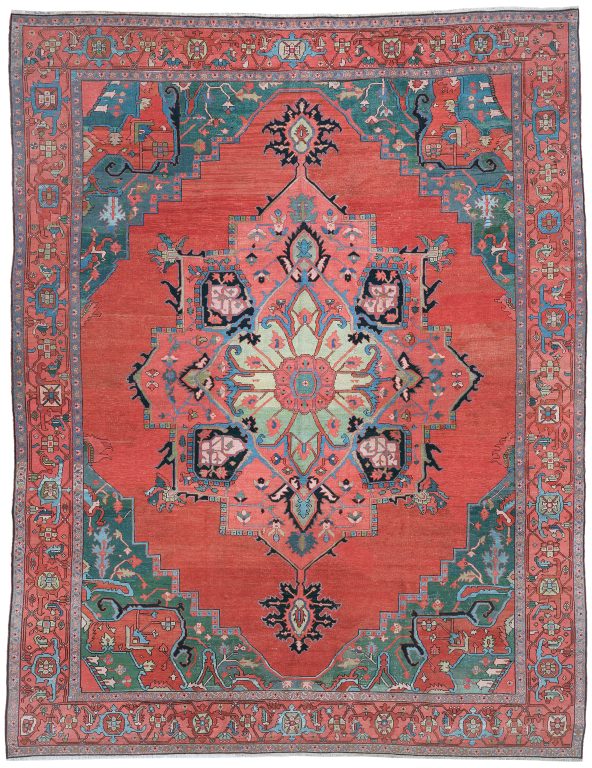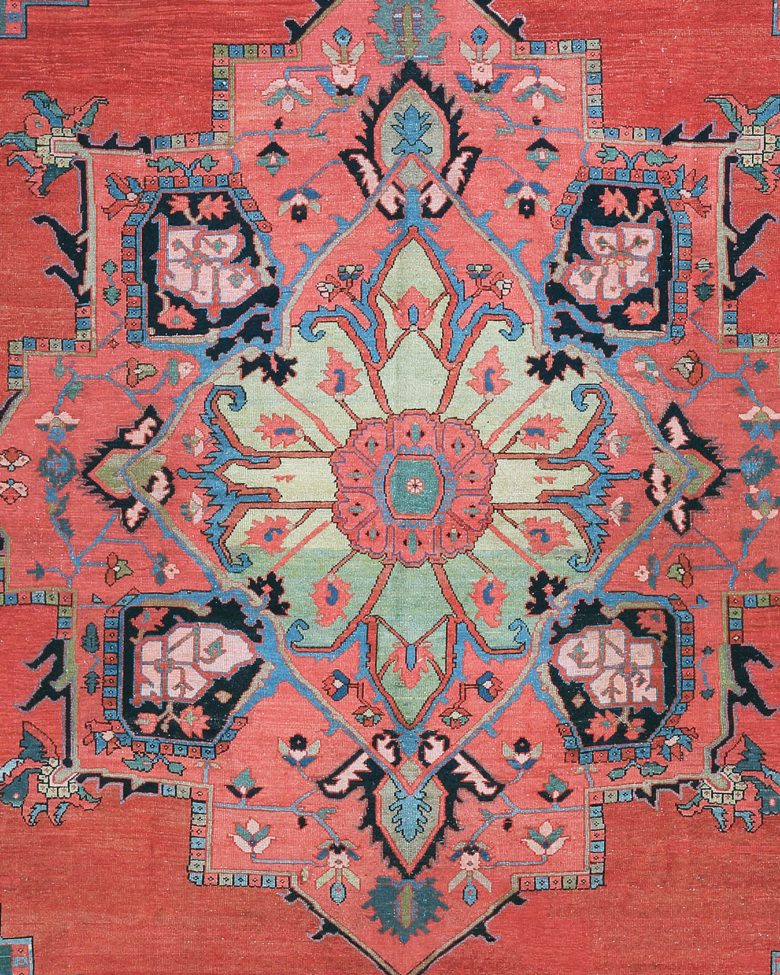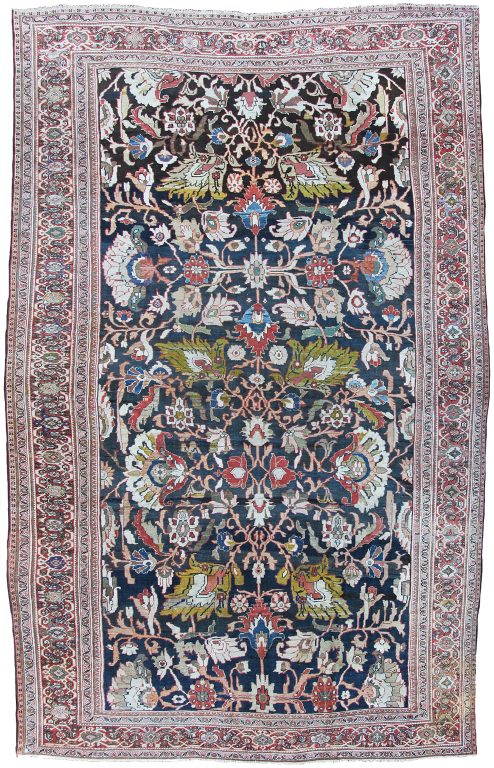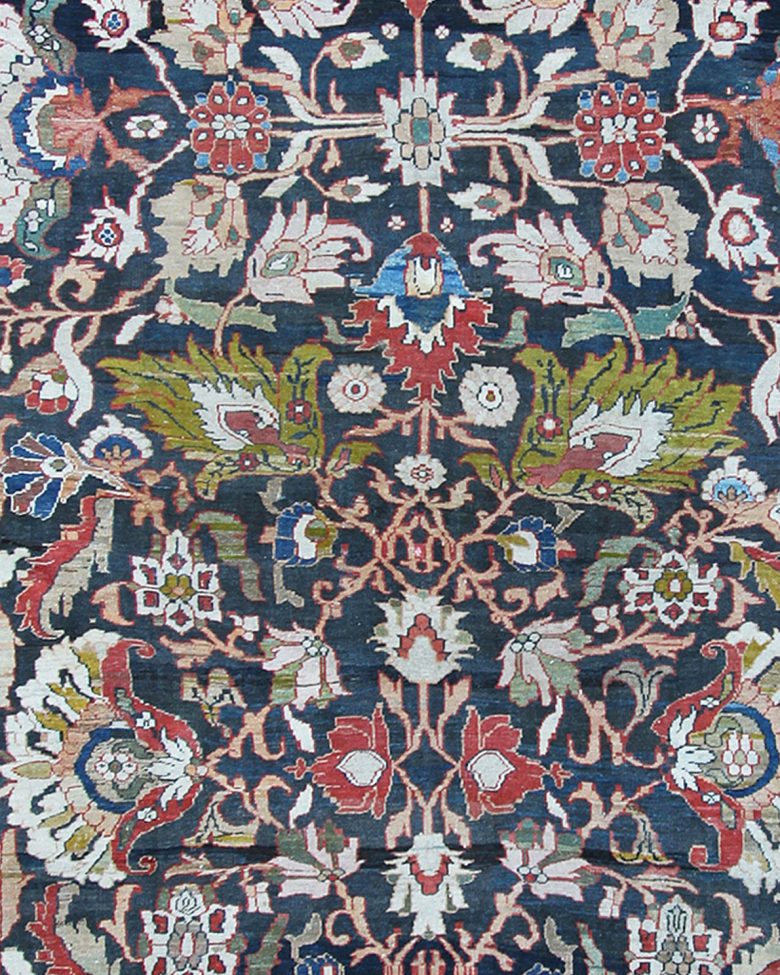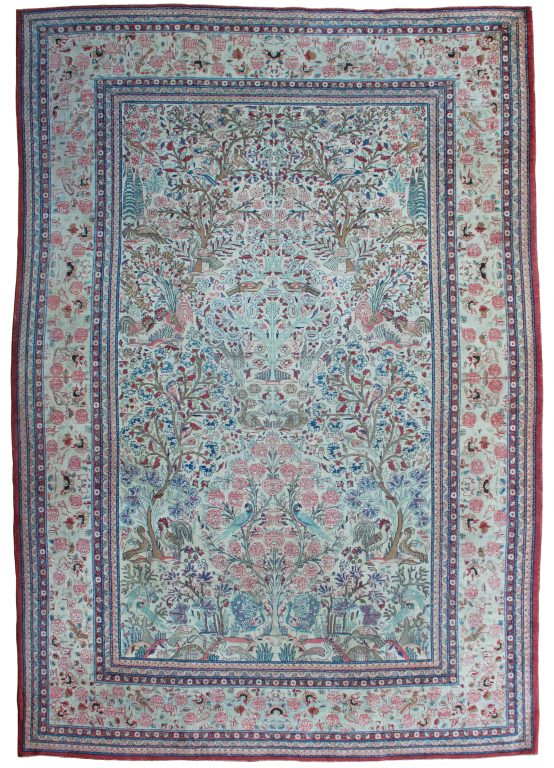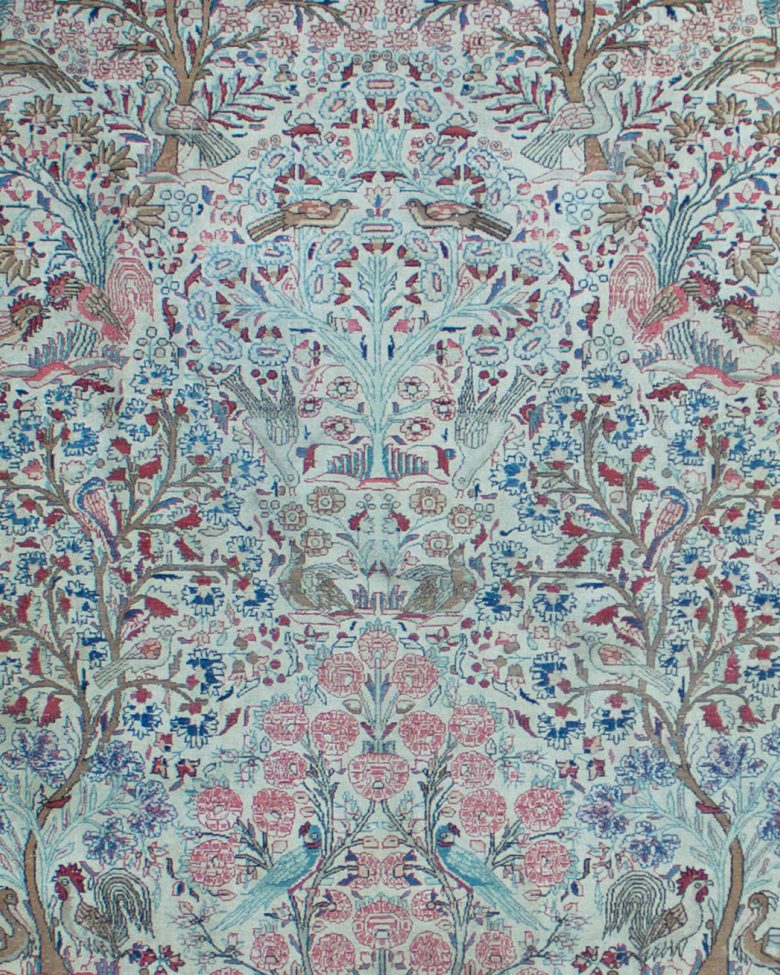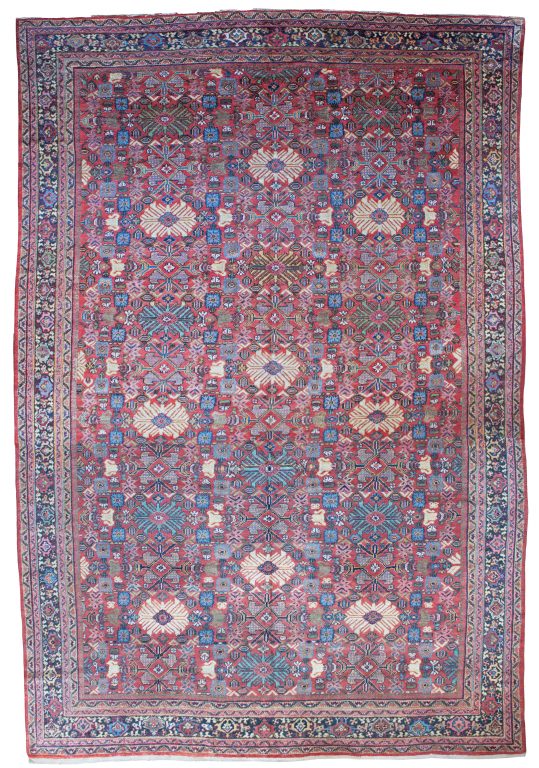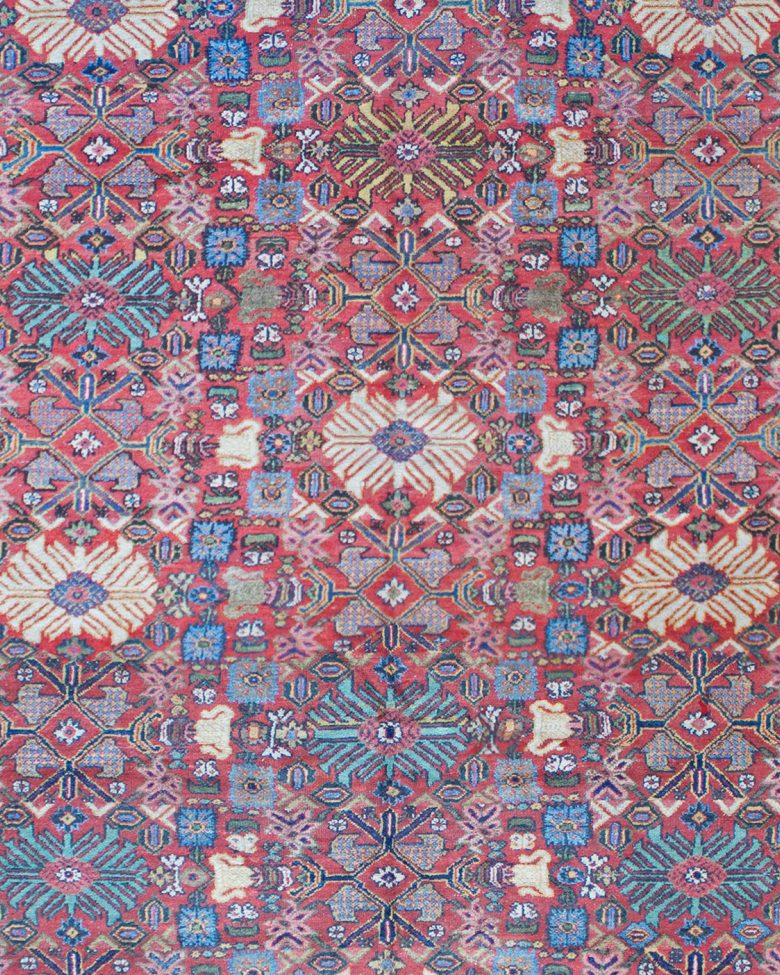The main border is usually some variant of the flower and vine scroll pattern. In terms of design, what distinguishes Serapis from Heriz carpets is once again the more open bold designs. The articulation of the medallions is crisper, more finely linear, and open, the highest grade in terms of weave, and very probably the oldest type in terms of age.
Heriz carpets are generally coarser carpets than Serapi with as few as 30 knots per square inch. They also have a deeply depressed warp structure with a markedly ribbed back surface. Since the early twentieth century they have come to make use of light blue cotton wefting. Serapis, in contrast, have a higher knot count, sometimes attaining 80 knots per square inch. Their backs are relatively flat, and they have ivory cotton wefting. Generally they have a softer handle than Heriz, and they are thinner. On the whole, it appears that what we call Serapi carpets are simply the oldest, most well-designed, and finely woven Heriz carpets.
The Heriz region produced exceptional hand-woven carpets and rug by Azerbaijan Turkish inhabitants close to the city of Heris in North-West Persia. They are famous among designers and collectors because of their vivid geometric designs and stunning vegetable dyes with soft earthly tones.
We offer the service of viewing any of our carpets & rugs in-situ in London, Surrey, Hampshire the UK & Europe by appointment. Please contact us using the enquire form below.


